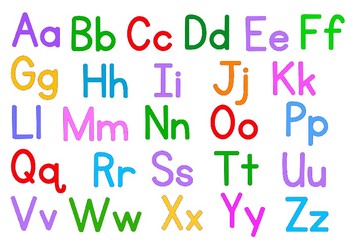Table of Contents
STORIES + ALPHABETS
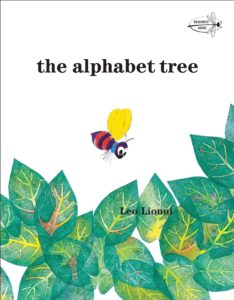 |
In Leo Lionni’s The Alphabet Tree (Alfred A. Knopf, 1990), each letter has a favorite leaf on the alphabet tree – until a gale-force wind swoops in and blows them all over the place. The solution is cooperation, as the letters band together to form words. For ages 3-7. |
| Make your own Alphabet Tree. | |
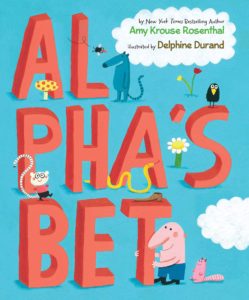 |
Al Pha, main character of Amy Krouse Rosenthal’s Al Pha’s Bet (Putnam Juvenile, 2011), lived “back when all sorts of things were being invented” – among them, the alphabet. Al takes on the challenge of putting all the letters in proper order. For ages 3-5. |
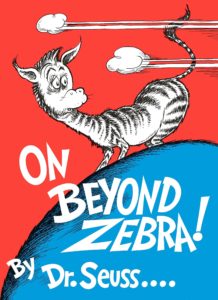 |
In Dr. Seuss’s On Beyond Zebra (Random House, 1955), inventive young Conrad Cornelius O’Donald O’Dell introduces a host of wonderful letters that come after Z. (Try YUZZ, THNAB, and FLOOB.) (Invent some of your own!) For ages 4-8.
Note: this is one of the Seuss books that is being withdrawn from publication due to insensitive and/or hurtful wording or imagery. Not all agree – including me. See Joshua Katz’s essay On Beyond Madness. |
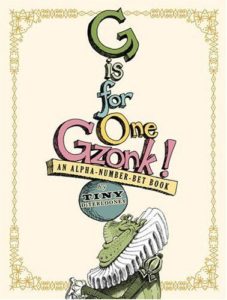 |
Tony DiTerlizzi’s G is for One Gzonk (Simon & Schuster, 2006) is an outrageously zany “alpha-number-bet book” in which readers learn letters and numbers through such imaginary creatures as the Angry Ack, Dinkalicious Dinky, and Ravenous Rotoid. Lots of clever vocabulary and witty asides. For ages 4-7. |
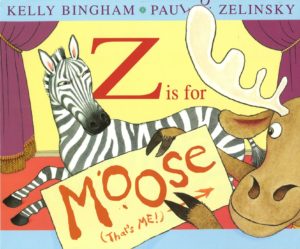 |
In Kelly Bingham’s Z is for Moose (Greenwillow Books, 2012 ), Zebra is directing the line-up of the alphabet, a task continually disrupted by the over-eager Moose, who keeps bursting onto the scene, demanding “Is it my turn now?” “NOW?” Devastatingly, when M finally comes along, the letter goes to Mouse – but Zebra saves the day at Z, when Z stands for “Zebra’s friend Moose.” A great (and funny) read for ages 4-8. |
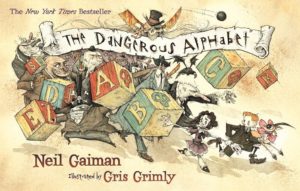 |
In Neil Gaiman’s The Dangerous Alphabet (HarperCollins, 2010), two kids and their pet gazelle launch themselves into a spooky underground in search of treasure. The story, rife with pirates, monsters, and trolls, is told in rhyming alphabetical (slightly scrambled) couplets. With Victorian-style illustrations by Gris Grimly. For ages 6-9. |
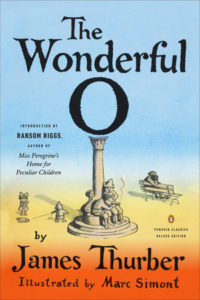 |
In James Thurber’s The Wonderful O (Simon & Schuster, 1957), a pirate named Black in search of buried treasure takes over the island of Ooroo and proceeds to ban the letter O. As the pirates forcibly remove everything with an O in its name, the islanders, led by a poet named Andreus, vow that four O words will not be lost: hope, valor, love, and freedom. This short chapter book is appropriate for ages 8 or so and up – probably not much younger; the word play is so clever that kids need well-developed reading and vocabulary skills to fully appreciate it. |
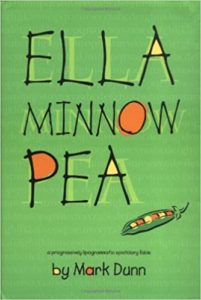 |
Ella Minnow Pea. Say it once or twice, fast, and you’ll see what it has to do with the alphabet. Ella is the protagonist of Ella Minnow Pea by Mark Dunn (Anchor, 2002), set on the fictional island of Nollop off the coast of South Carolina. The island is named for its founder, Nevin Nollop, inventor of the famous pangram (that is, a sentence using all 26 letters of the alphabet) “The quick brown fox jumps over the lazy dog.” This pangram is set in tiles on the base of Nollop’s memorial monument and when the tiles start falling off, the Nollopian governmental committee attributes it not to failing glue but to a sign from the beyond. The Z is the first to fall, and it is promptly decreed that the letter Z be expunged from the Nollopian alphabet. This is a problem for Nollopians named Zeke or Zachary, and a disaster for the island beekeeper (the bees, which make ZZZ sounds all the time, have to be eliminated), but most people manage to get by. As more and more letters fall, however, life becomes increasingly difficult; and the island takes on aspects of a fascist state. For teenagers and adults. |
| Visit Pangrams to learn all about these slippery alphabetical sentences and have a try at inventing one of your own. | |
| Also see Words, Word Play, and Grammar. | |
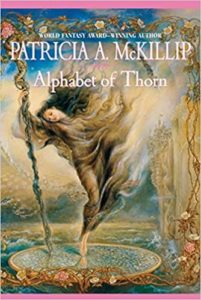 |
In fantasy author Patricia McKillip’s Alphabet of Thorn (Ace Trade, 2005), Nepenthe, a foundling with an unusual talent for language and translation, is raised by the librarians of the Royal Library of Raine, where she leads a secluded ivory-tower existence, devoted to books. Then a student mage brings her a new book written in a strange thorn-like alphabet that only she can read – and that appears to have strange magical powers. For teenagers and adults. |
ALL ABOUT THE ALPHABET
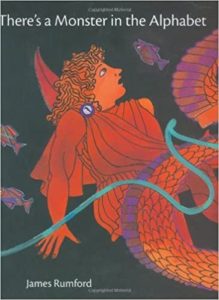 |
James Rumford’s There’s a Monster in the Alphabet (Houghton Mifflin Harcourt, 2002) is the story of the pictorial beginnings of our modern alphabet, supposedly first brought to ancient Greece by the Phoenecian hero Cadmus. An appended chart compares English, Phoenecian, Greek, Hebrew, and Arabic alphabets. |
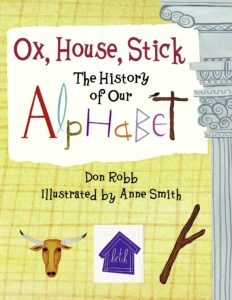 |
Don Robb’s Ox, House, Stick: The History of Our Alphabet (Charlesbridge, 2007) is a 48-page picture-book history of the alphabet targeted at ages 8-12. |
| Alphabet Books from Grim Morality to Pleasurable Learning is a brief history of alphabet books (with examples) from The Victorian Web. | |
| David Goldenberg’s Z is for Zebra – 90% of the Time is a fascinating short article on the history of animal alphabet books. (Zebras rule.) | |
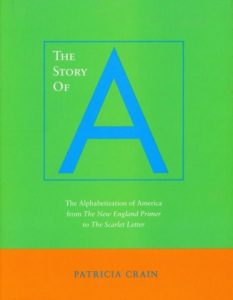 |
Patricia Crain’s The Story of A (Stanford University Press, 2002), subtitled “The Alphabetization of America from The New England Primer to the Scarlet Letter” is a literary history of alphabet books and their cultural impact, and a discussion of the impact of the alphabet and alphabetical order on American society. Illustrated with wonderful images from period alphabet books. For teenagers and adults. |
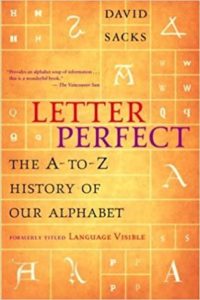 |
David Sacks’s Letter Perfect (Broadway Books, 2004) is the “marvelous history of our alphabet” from the Phoenecians to the present day. Included are general information, a family tree of world alphabets, many alphabetic charts, photographs of artifacts, and 26 informative chapters, each devoted to a different letter of the alphabet. Find out how letters got their shapes, why some letters have multiple sounds, and why X marks the spot. For teenagers and adults. |
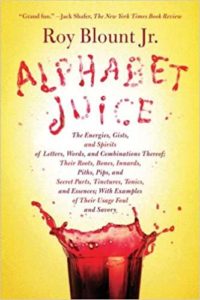 |
Roy Blount’s Alphabet Juice (Sarah Crichton Books, 2009), arranged A to Z alphabet-style, is an info- and anecdote-filled overview of words and letters. The enormous subtitle gives you a sense of the content: “The Energies, Gists, and Spirits of Letters, Words, and Combinations Thereof; Their Roots, Bones, Innards, Piths, Pips, and Secret Parts, Tinctures, Tonics, and Essences; With Examples of Their Usage Foul and Savory.” For teenagers and adults. |
